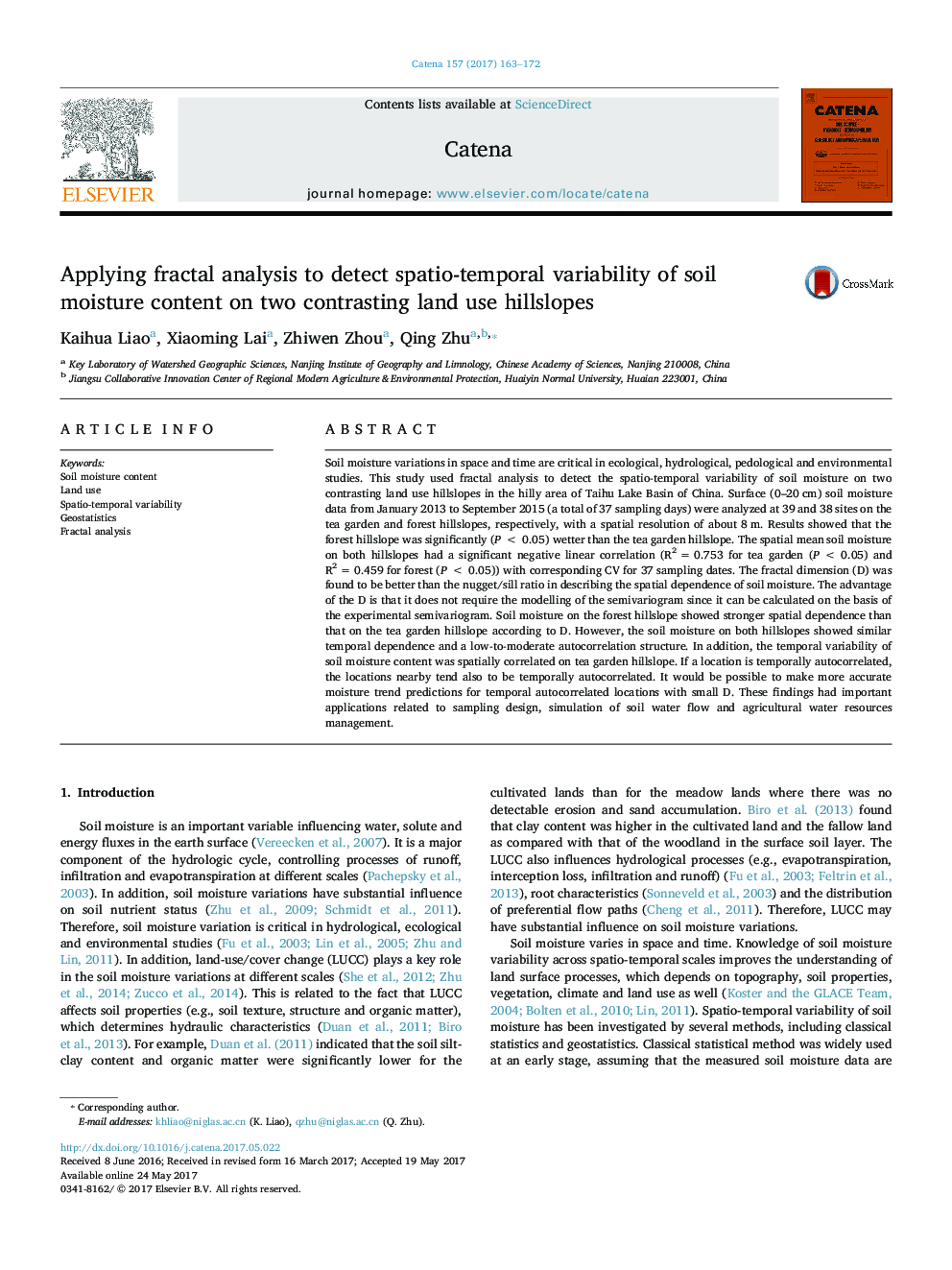| Article ID | Journal | Published Year | Pages | File Type |
|---|---|---|---|---|
| 5769854 | CATENA | 2017 | 10 Pages |
â¢The forest hillslope was significantly (P < 0.05) wetter than the tea garden hillslope.â¢The spatial mean soil moisture on both hillslopes had a significant negative linear correlation with corresponding CV.â¢Soil moisture on the forest hillslope showed stronger spatial dependence than that on the tea garden hillslope.â¢Soil moisture on both hillslopes showed similar temporal dependence and a low-to-moderate autocorrelation structure.
Soil moisture variations in space and time are critical in ecological, hydrological, pedological and environmental studies. This study used fractal analysis to detect the spatio-temporal variability of soil moisture on two contrasting land use hillslopes in the hilly area of Taihu Lake Basin of China. Surface (0-20Â cm) soil moisture data from January 2013 to September 2015 (a total of 37 sampling days) were analyzed at 39 and 38 sites on the tea garden and forest hillslopes, respectively, with a spatial resolution of about 8Â m. Results showed that the forest hillslope was significantly (PÂ <Â 0.05) wetter than the tea garden hillslope. The spatial mean soil moisture on both hillslopes had a significant negative linear correlation (R2Â =Â 0.753 for tea garden (PÂ <Â 0.05) and R2Â =Â 0.459 for forest (PÂ <Â 0.05)) with corresponding CV for 37 sampling dates. The fractal dimension (D) was found to be better than the nugget/sill ratio in describing the spatial dependence of soil moisture. The advantage of the D is that it does not require the modelling of the semivariogram since it can be calculated on the basis of the experimental semivariogram. Soil moisture on the forest hillslope showed stronger spatial dependence than that on the tea garden hillslope according to D. However, the soil moisture on both hillslopes showed similar temporal dependence and a low-to-moderate autocorrelation structure. In addition, the temporal variability of soil moisture content was spatially correlated on tea garden hillslope. If a location is temporally autocorrelated, the locations nearby tend also to be temporally autocorrelated. It would be possible to make more accurate moisture trend predictions for temporal autocorrelated locations with small D. These findings had important applications related to sampling design, simulation of soil water flow and agricultural water resources management.
